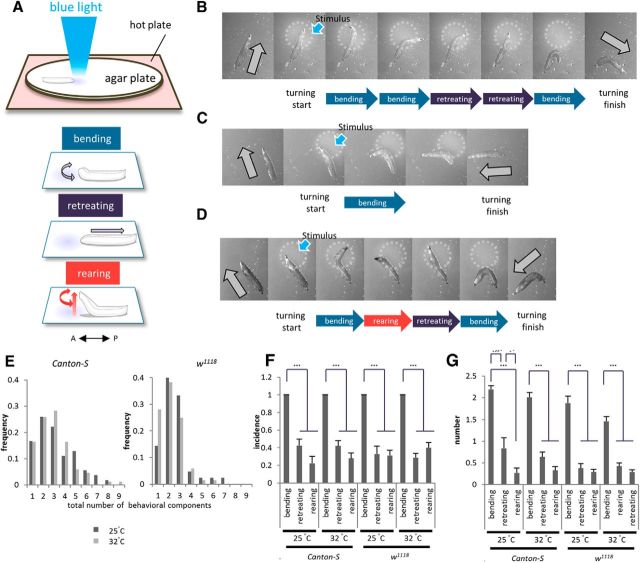Figure 1.
Larval directional change behavior consists of three components: bending, retreating, and rearing. A, Schematic of the behavioral assay and three components of the directional change behavior. The anterior–posterior (A–P) axis of a larva is shown by a double-headed arrow in this and subsequent figures. B–D, Examples of the directional change in wild-type (Canton-S) larvae. Snap shots of each turning event are shown. The circles enclosed by white dashed lines indicate the region of the light stimulus. Gray arrows indicate larval direction before and after directional change in this and subsequent figures. E, Histograms of the total number of behavioral components in each event. Results were obtained from 54 turning events in 11 larvae at 25°C and 84 events in 16 larvae at 32°C (Canton-S, left), and 42 events in 9 larvae at 25°C and 68 events of 13 larvae at 32°C (w1118, right). F, Incidence of each component (bending, retreating, and rearing) included in a turning event. n = 13–16. G, Average number of each component included in a turning event. n = 13–16. *p < 0.05; ***p < 0.001 (Tukey–Kramer post hoc test).

